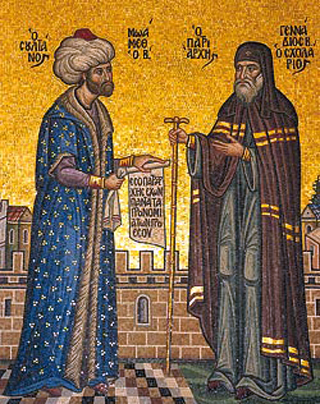
A 15th century painting from the Ottoman Empire, depicting Mehmed the Conqueror meeting Patriarch Gennadius II from Constantinople. Non-Muslim people were still ruled by the Empire, but weren't always forced to follow the Muslim faith. This image is in the public domain.
Instructor(s)
Prof. Lerna Ekmekcioglu
MIT Course Number
21H.365
As Taught In
Spring 2014
Level
Undergraduate
Course Description
Course Features
Course Description
This seminar considers "difference" and "sameness" as they have been conceived, experienced, and regulated by peoples of the Middle East, with a focus on the 19th and 20th centuries. The first half discusses the Ottoman Empire by exploring how this multiethnic, polyglot empire survived for several relatively peaceful centuries and what happened when its formula for existence was challenged by politics based on mono-ethnic states. The second half of the course focuses on post-Ottoman nation-states, such as Turkey and Egypt, and Western-mandated Arab states, such as Syria, Lebanon, Palestine, and Iraq. Finally, the course concludes with a case analysis of Israel.


